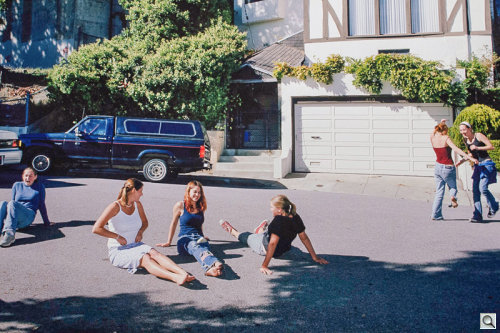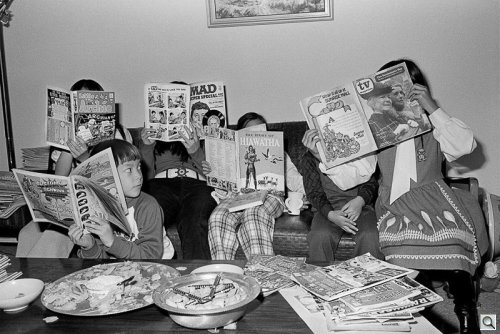Photo Corners headlinesarchivemikepasini.com
![]()
A S C R A P B O O K O F S O L U T I O N S F O R T H E P H O T O G R A P H E R
![]()
Enhancing the enjoyment of taking pictures with news that matters, features that entertain and images that delight. Published frequently.
The Michael Jang Retrospective



30 October 2019
In 2001 at the notorious age of 50, Michael Jang went through the prints he had saved of photos he took 20 and 30 years earlier. He put his favorites in a box and dropped them off at SFMOMA. A few weeks later, Sandra Phillip, curator of photographer, invited him to meet with her and three other curators.
"They asked me, 'Where have you been?'" he recalled in a recent interview. "And I answered honestly that I just took the pictures in school and then forgot about them for 40 years while I got on with my life."
The museum, noted for its photography collection, bought a few of the prints but that wasn't the end of it. Phillips curated the first retrospective of Jang's career, now showing at the McEvoy Foundation of the Arts in San Francisco through Jan. 16, 2020.
We took in the show on a recent Saturday morning, alone with the 110 works on display (20 by the photographers who inspired him) that range from black-and-white prints to posters and videos.
WHO IS MICHAEL JANG?
Jang was born in Marysville, Calif., in 1951. Forty miles north of Sacramento at the foot of the Sierras, Marysville had a significant Chinese American community in the 1860s after the Gold Rush that survived the racist purge of the 1870s.
He left Marysville to attend CalArts in Los Angeles where he was graduated with a Bachelor of Fine Arts degree in 1973. He had been a design major until he saw the work of Diane Arbus, Garry Winogrand and Lee Friedlander. Their small format work showed him he didn't have to lug around a view camera like the f/64 photographers. And even better, he could fire away at will.
That inspired him to pursue his fine arts degree as a photographer. He photographed college life and used fake press credentials to sneak into events held at the Beverly Hilton.
Those weekend escapades at the Hilton netted Jang images of celebrity after celebrity: David Bowie, Jack Lemmon, Bea Arthur, Lawrence Welk, Frank Sinatra, Ronald Reagan, Milton Berle.
In the summer of 1972, Jang took a class with Lisette Model at the University of California Berkeley Extension. After hours of fruitless street shooting, he decided to photograph the relatives he was staying with, who mostly ignored him.
After graduation, Jang moved to San Francisco to study at the San Francisco Arts Institute, where he received a Masters of Fine Arts degree. It was during his studies there that he became acquainted with the punk scene, shooting the Ramones and Sex Pistols while documenting the culture around them.
After graduating he went to work as a commercial photographer and ultimately made a living as a portrait photographer.
His prints remained in a box as he raised his family until that day in 2001 when he dropped them off at SFMOMA.
THE EXHIBIT
The McEvoy is on Minnesota St. in the Dogpatch area of San Francisco, easily reached by the T streetcar line and with ample free parking for out-of-town visitors. The Jang Retrospective is free, as well.
The exhibit fills four rooms. The first is hung with 20 photographs by Arbus, Friedlander and Winogrand to set the mood. Tables in the middle of the room exhibit Jang's notebooks, press credentials, letters and other ephemera.
That leads into a large room with several enormous portraits staring back at you on the far wall. Most of the work is from his early period of black-and-white images printed at 8x10, 11x14 and 16x20 inches.
A hallway-like room houses his color work and punk documentary work with exhibit tables holding related ephemera.
And finally there is a video screening room.
While the collection itself represents his entire career, it was drawn from only about half of his work. Over the years, he threw the rest of it away. "I trashed it because I didn't believe in it," he says regretfully.
AN APPRECIATION
If it was hard for Jang to appreciate his work, it is only a little easier for us, a contemporary just a bit younger. We inhabited the same San Francisco of the 1970s and 1990s, shooting black-and-white with an Argus C-3 and Nikon FM2, developing the film and making prints in a blacked-out bathroom.
So as we walked the big room, looking at the celebrity photos, we could be forgiving of the unfortunate composition remembering our focal length options weren't always ideal in those days. We were often shooting with a 50mm prime when an 18-135mm zoom would have given us better options. Or standing in an less than fortuitous location to get the shot.
Those are problems a crop can't solve and Jang doesn't waste time trying. It's the Winogrand in him, you might think, but we suspect it was more the technology. Winogrand had the same problem but we aren't looking at his student photos.
But when we came to his shot of the 85-cent parking lots of the 1970s South of Market area, we had to stop in our tracks. We'd parked there daily for years before redevelopment brought Moscone Center to the area. It was a little like seeing your grammar school playground again.
We had the same experience viewing his image of the Golden Gate Bridge walk on the span's 50th anniversary. We were within yards of him when he took this shot as the mob, near panic, tossed 10-speed bikes over the railing to make room to turn around and escape the crush, unable to cross the bridge as planned.
And then there were the scenes from the Milk and Moscone assassinations. Joyce, who came with us to see the retrospective, had been in City Hall on jury duty that day.
Those images have a historical significance. We were privileged to see them.
Oddly enough, we had to come full circle in the big room to see the early photos he took of the relatives he was living with when he studied with Lisette Model.
We are not unfamiliar with the fun and chaos of large Chinese-American families. And we found delightful echoes of our experience in these images.
They do profit from the disinterest of the subjects in the photographer. He wasn't a photographer. He was Michael being annoying. Ignore him. And they did. He went around the house at all hours taking photographs, documenting their life and times.
More can be made of that (the development of suburbia, which as we recall, really happened 20 years earlier after World War II) but what can't be denied is Jang's intimate look at the preciousness of the ordinary. Life as we know it. Without realizing how much it matters -- until much later.
That is different from what Winogrand or Friedlander were after. But it's the very thing we most appreciated about Jang's work.
And that is a quality that takes a few years to develop. In a light-tight box, preferably.

